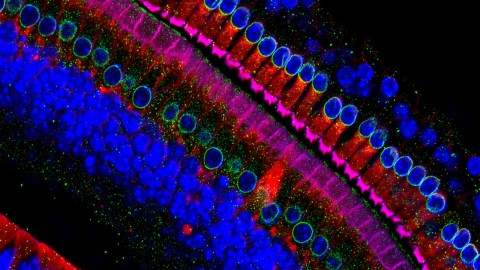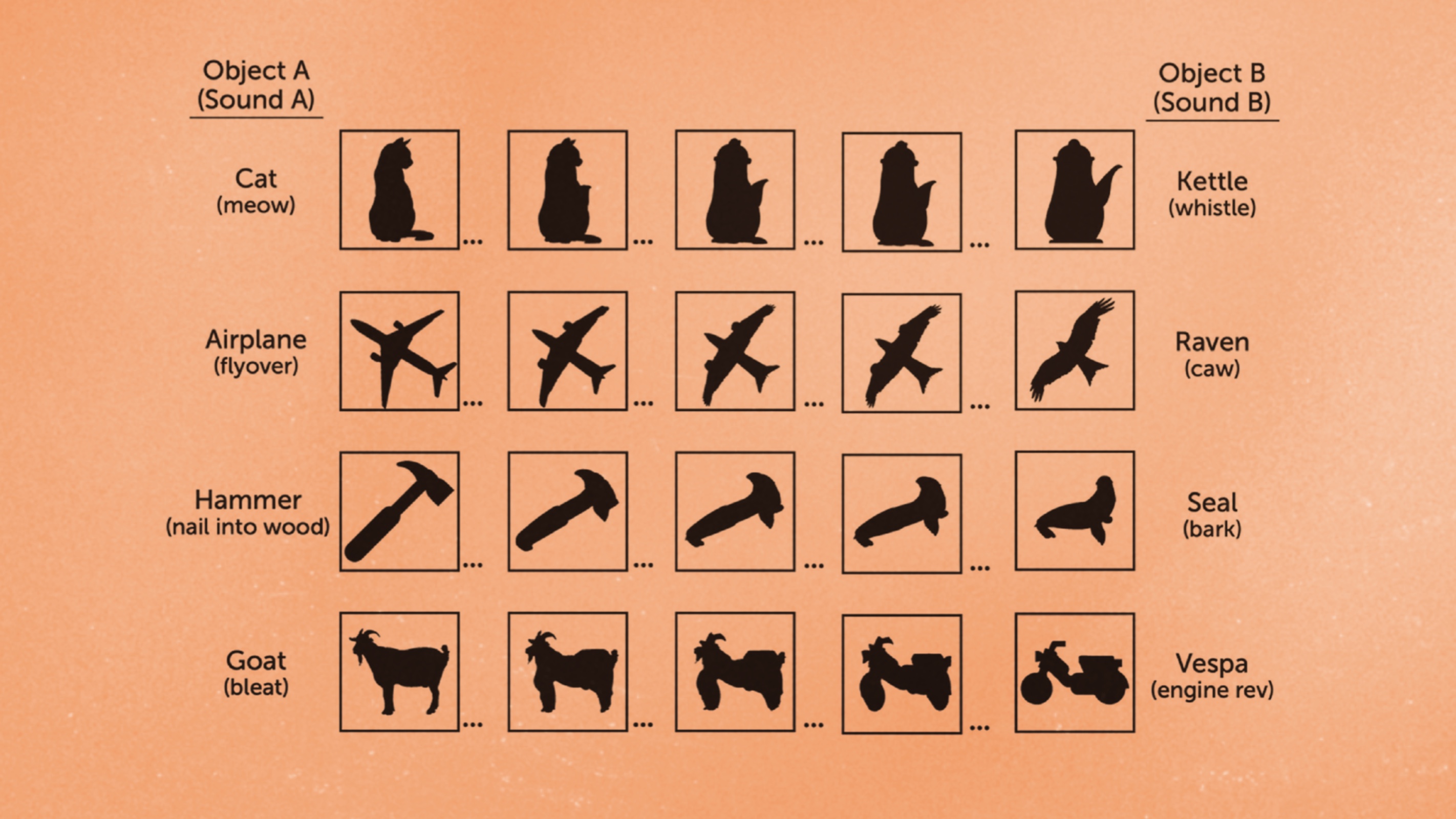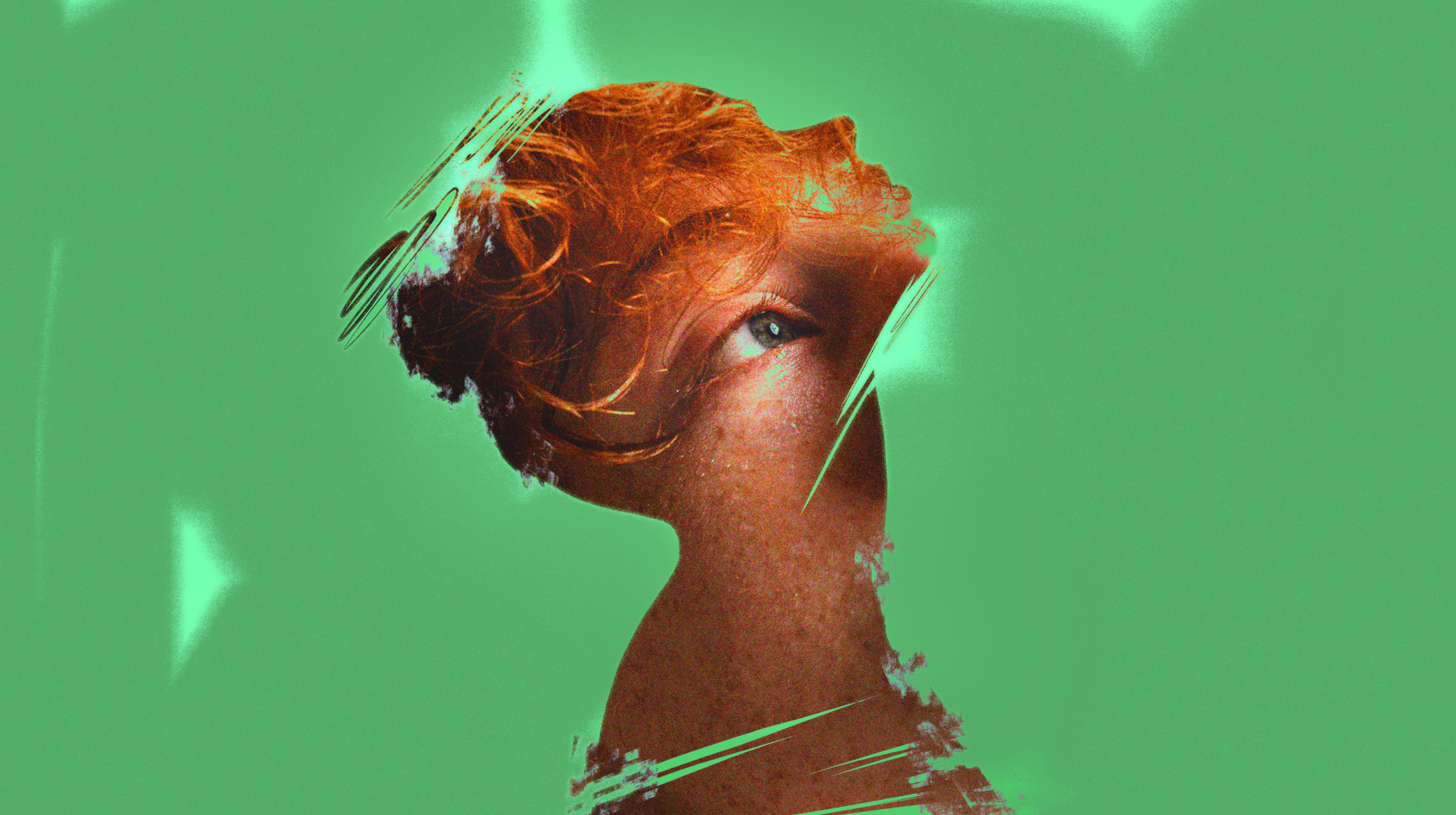New study discovers how to reverse hearing loss

- Humans are born with about 16,000 hair cells in each of our ears. Those are the only ear hair cells we’ll ever have.
- Our hair cells can be damaged or killed by disease, aging, or exposure to loud noises. Loss of hair cells is the most common cause of age-related hearing loss, which affects one in three people over the age of 65.
- The current study advances our efforts to reverse hearing loss.
Five years after getting newborn mice to regenerate the hair cells needed for hearing, researchers at the University of Rochester have now figured out how the process works — putting us closer to reversing the most common cause of hearing loss as people age.
The challenge: Humans are born with about 16,000 hair cells in each of our ears. Those are the only ear hair cells we’ll ever have, and their job is to convert sound vibrations into electrical signals our brains can understand.
Our hair cells can be damaged or killed by disease, aging, or exposure to loud noises. Once hair cells die, there’s nothing we can do to regrow them, and loss of hair cells is the most common cause of age-related hearing loss, which affects 1 in 3 people over the age of 65.
The background: Unlike humans, birds and fish are able to regenerate their hair cells, and in 2014, Harvard researchers discovered that mice can regenerate damaged hair cells, too — but only as newborns.
Damaged hair cells are the most common cause of age-related hearing loss.
In a past study, Rochester researchers discovered that a family of proteins called epidermal growth factor (EGF) receptors kick off hair cell regeneration in birds by triggering “support cells,” in the bird-equivalent of ears. Those support cells then multiply and develop into new hair cells.
In 2018, they demonstrated that activating a specific EGF receptor gene — ERBB2 — in newborn mice caused the rodents’ cochlear support cells to begin multiplying and developing into hair cells.
“We can trigger this event, and surprisingly, we found there’s a lot of proliferation,” lead researcher Jing Yuan told Rochester First — but the researchers didn’t really understand exactly how ERBB2 did this.
Genetic dominos: In their latest study, published in Frontiers in Cellular Neuroscience, the Rochester researchers went back to the lab and discovered that activating ERBB2 initiates the expression of several other proteins.
“[R]egeneration is not only restricted to the early stages of development.”
DOROTA PIEKNA-PRZYBYLSKA
One of those, called SPP1, then activates another protein, CD44, which is known to exist in cochlear support cells. They proved that this domino effect happens in adult animals, too.
“When we checked this process in adult mice, we were able to show that ERBB2 expression drove the protein expression of SPP1 that is necessary to activate CD44 and grow new hair cells,” said first author Dorota Piekna-Przybylska.
“This discovery has made it clear that regeneration is not only restricted to the early stages of development,” she continued. “We believe we can use these findings to drive regeneration in adults.”
The big picture: The Rochester team isn’t the first or only group looking to reverse hearing loss by triggering hair cell regeneration.
Scientists at USC have managed to extend the regeneration window in young mice, and biotech company Frequency Therapeutics even developed a therapy to regenerate hair cells that reached clinical trials — but it failed to work as hoped.
“We believe we can use these findings to drive regeneration in adults.”
DOROTA PIEKNA-PRZYBYLSKA
Now that we have a deeper understanding of how hair cell regeneration works (at least, in some mammals), the Rochester team is better equipped to figure out if it’s possible to trigger the process and maybe reverse hearing loss in people.
“This new study tells us how that activation is happening — a significant advance toward the ultimate goal of generating new cochlear hair cells in mammals,” said researcher Patricia White.
This article was originally published by our sister site, Freethink.





